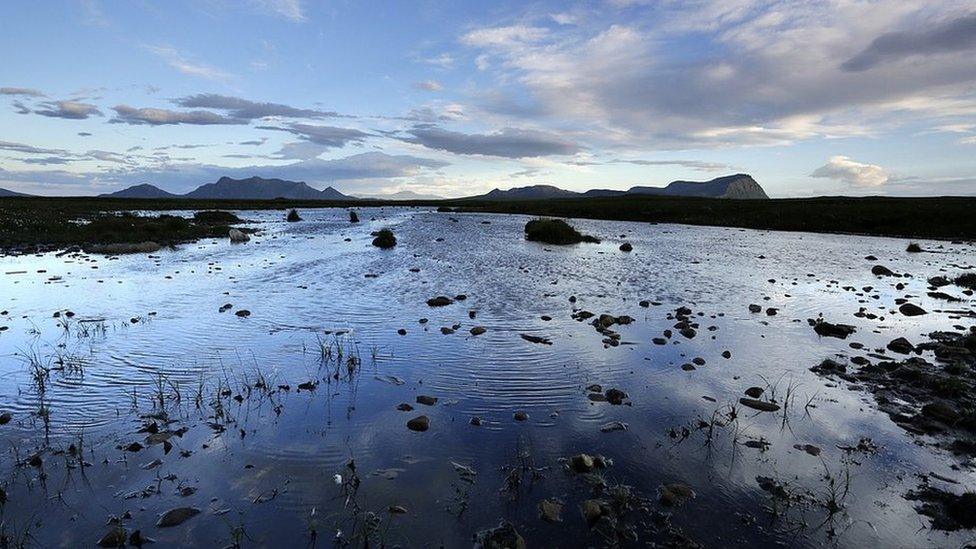Peatland restoration plan to cut climate change gas emission
- Published
There is an estimated 1.7 million hectares of peatland in Scotland
An £8m fund to help restore Scotland's peatlands has been launched by the Scottish government.
The restoration work will help reduce the country's greenhouse gas emissions by locking carbon into the environment.
It is estimated there are 1.7 million hectares of peatland in Scotland, much of which is eroding.
The funding will double the amount already restored from almost 10,000 hectares to 20,000.
A significant increase in peatland restoration forms part of Scotland's draft Climate Plan, which is currently going through parliament.
It aims to increase annual targets to 20,000 hectares, with 250,000 expected to be restored by 2032.
The carbon contains greenhouse gases that are released when it is exposed due to erosion of the peatlands by the elements.
Erosion is caused by the peat either being washed away by rainfall or dried out by the sun.
Experts flatten the peat embankments using diggers and then cover over with vegetation.
Andrew McBride, a peatland specialist with Scottish Natural Heritage, told BBC Scotland: "Scotland's peatlands actually hold the equivalent of about 140 years of our emissions from Scotland - all the industry. So it's very important that we hold the actual carbon and the peat in place.
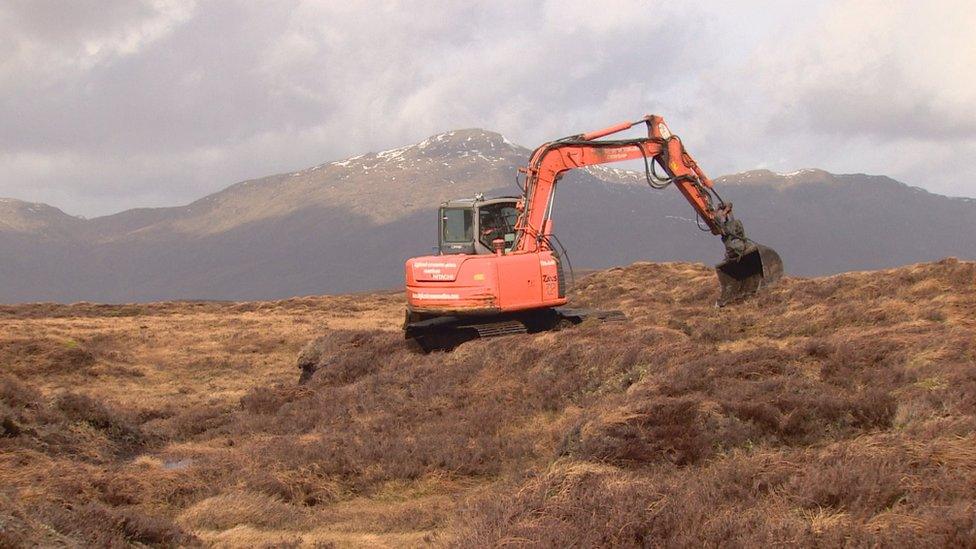
The project aims to restore 20,000 hectares of peatlands in Scotland
"If it goes into the atmosphere, it's actually going to exacerbate climate change and that's why we're doing this, basically to cap it and keep it in place."
Work has recently begun on a 15-hectare stretch of moorland on the Auchlyne and Suie estates in Perthshire, which involves the re-profiling of 12km of peat hags.
Two diggers will spend about four weeks re-sculpting the landscape 2,000ft above sea level.
'Benefit wildlife'
Landowner Emma Paterson said: "One did think, well, that sounds very odd because back in the 70s my mother got grants to do a lot of draining and this seemed to be going completely the opposite way.
"Thinking on it, it's going to benefit wildlife and make the habitat better with better grazing for animals."
The work on the Auchlyne and Suie estate is costing £49,000 and was organised by the Loch Lomond and the Trossachs National Park.
The park's land manager, Harriet Donald, said: "You've got a lot of vegetation on the top (of healthy peatland) so basically at the moment you're losing any species, invertebrates, bird species that use that vegetation.
"So once that comes back in, you're creating an active, healthy peatland which will benefit all manner of biodiversity."
Environment Secretary Roseanna Cunningham said: "Restoring our peatlands and taking advantage of their value as a natural resource is crucial if we are to continue to build on our world leading low carbon ambitions, and reduce emissions by 66% by 2032.
"By increasing our investment more communities will be able to transform and use peatlands as an open space, regenerating it as a habitat for wildlife and reducing greenhouse gas emissions."
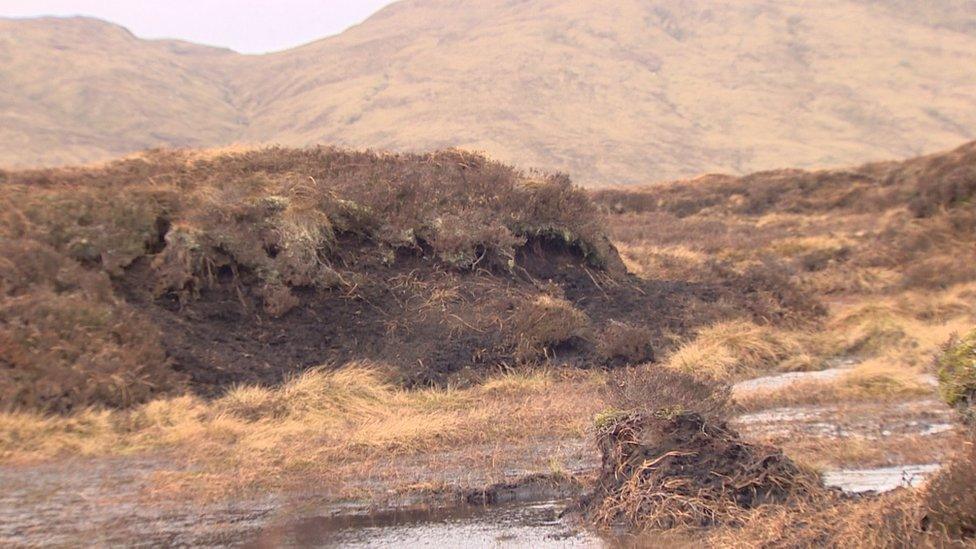
Exposing to peatlands to the elements can lead to the escape of greenhouse gases
- Published15 February 2017
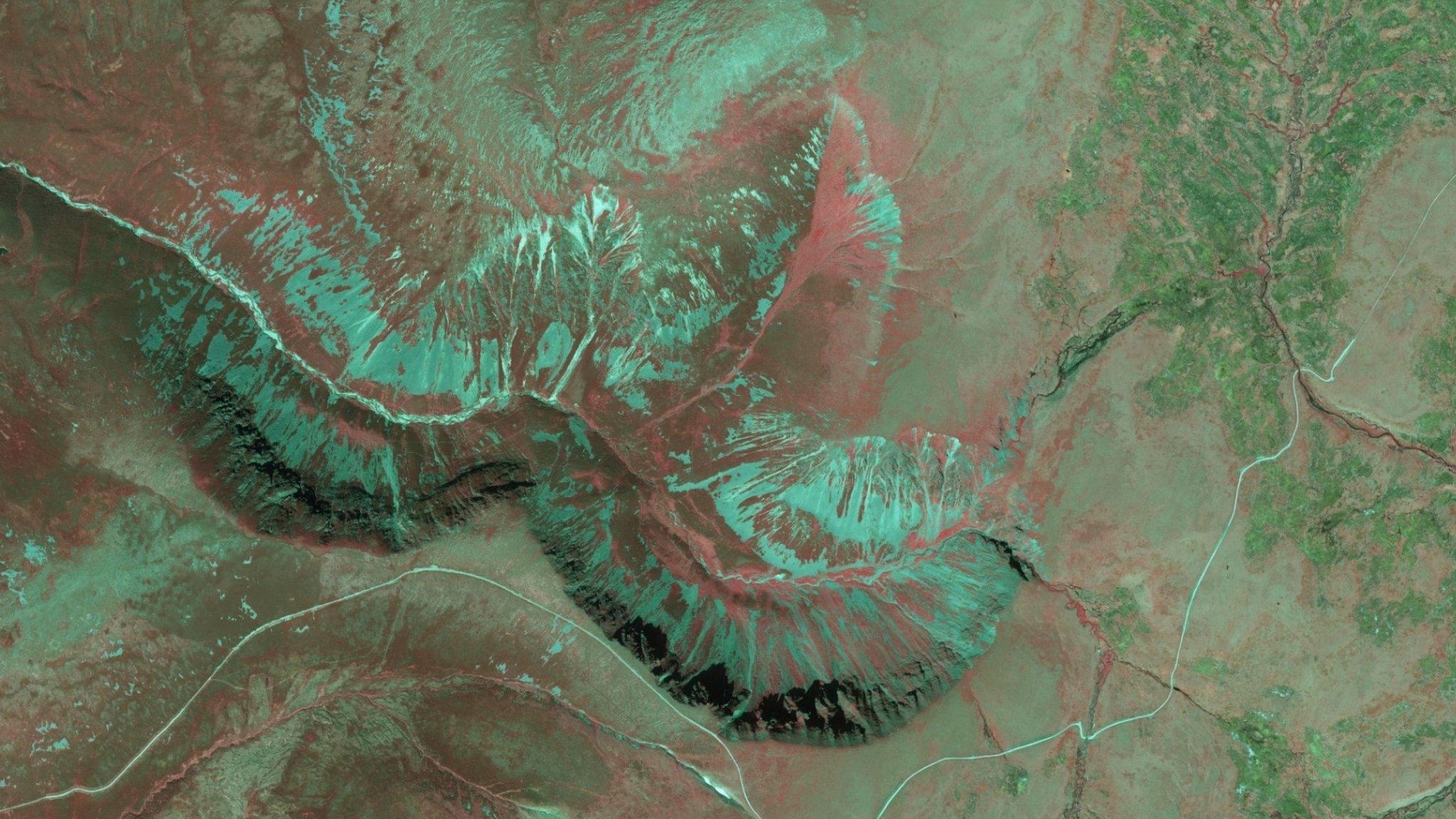
- Published10 November 2015
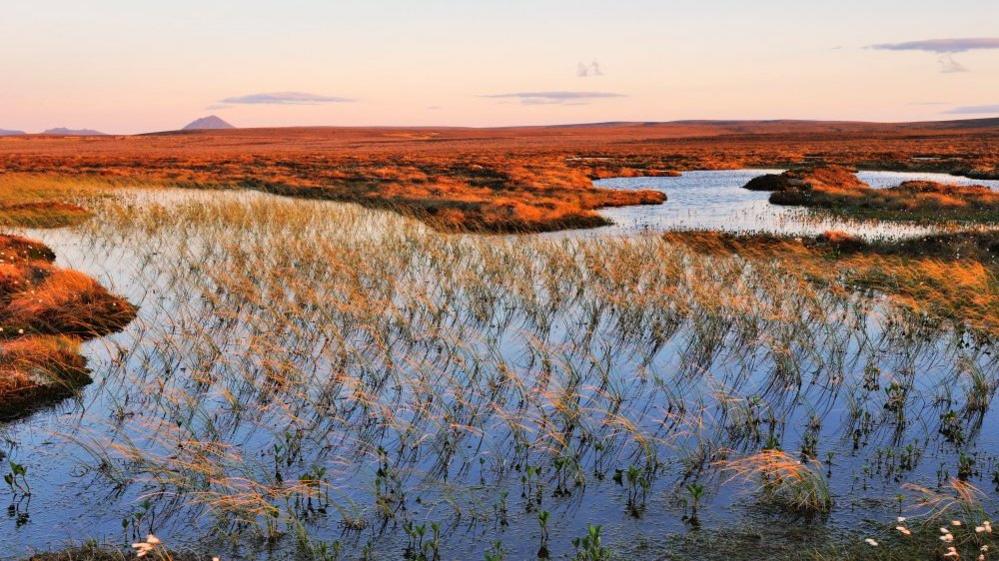
- Published28 August 2015
